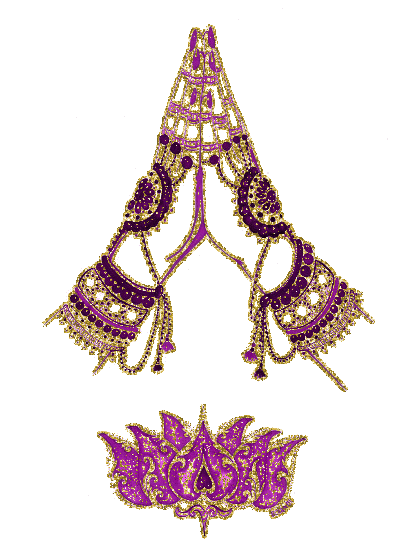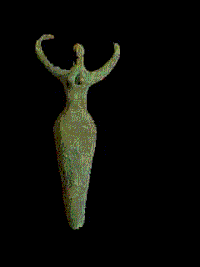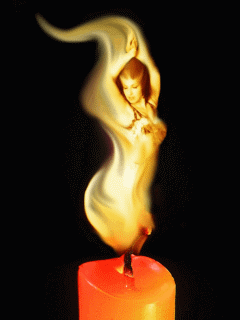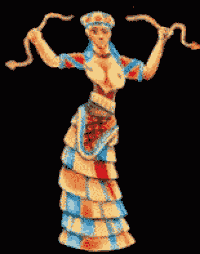
ancient wisdom, restorative yoga, sensual movement, sound healing, meditation and sacred rituals for the awakening and nourishment of the
Divine Feminine and Shaman-SheMan Within
for modern day healers, shamans, peace-makers, mystics, messengers, midwives, mothers, priestesses, artists, bridge-builders, and dream-weavers
(Gender and orientation diversity are welcomed!)

-
Connection Coach and Facilitator for Embodied, Empowered Communication Skills
-
Speaker, Communication Trauma-Dharma Somatic Healing
-
A Guide for Women's Embodied Spirituality, Sacred Sexuality and Dance
-
Mistress of Ceremonies: Marriages, Family & Pet Memorials , Rites of Passages
-
Creator of Shimmy SheMan Circles for Wo:Men and www.klaudeen.com
Belly Dance Origins
an edited excerpt from "Sacred Belly Dance Uncoiled and Decoded: Reclaiming the Ancient Dance of the Divine Mother and Women's Spirituality," by Klaudeen Shemirani, M.A.
The word dance comes from the Sanskrit tanha, meaning joy of life, while the Arabic raks and the Turkish rakkase derive from the Assyrian rakadu, meaning to celebrate.
Belly dance is the common name for the dance form also known as Middle Eastern dance, raks al-sharqi (dance of the East), raks al-baladi (dance of the people), raks al-Arabi (Arabic dance), oriental dance, danse du venture (dance of the stomach), as well as the popular name belly dance.
Scholar and dance expert Bonnie Paul (2006) found in her research considerable agreement that belly dancing originated in Africa. However, according to Paul (2006), the dance has roots that come from “several countries, including Algeria, Bahrain, Egypt, Iran, Iraq, Israel, Jordan, Kuwait, Lebanon, Libya, Morocco, Oman, Palestine, Qatar, Saudi Arabia, Syria, Tunisia, United Arab Emirates, and Yemen” (p. 5). Scholars of dance history Anthony Shay and Barbara Sellers-Young (2003) extended the origins of the dance, calling it a complex of movement practices that originated in a vast region extending from the Atlantic Ocean and North Africa and the Balkans in the west to the eastern areas of China, Central Asia, and the western portions of the Indian subcontinent in the east.
Several authors traced the origins of belly dance back to prehistoric matriarchal societies (Al-Rawi, 2003; Buonaventura, 1994; Dinicu, 1964; Paul, 2006; Stewart 2000; Tedlock, 2005;) “when women were celebrated as archetypes of the Great Mother, when dance was a central part of all ritual and celebration. Dance was more than simply movement; it was a pathway to connect with the divine” (Paul, 2006, p. 11).
Professional belly dance teacher and trainer in Sydney Australia and creator of Belly Dancing from the Heart Method training, Shemiran Ibrahim (n.d.), described belly dancing in a way that very much reflects many of my experiences and interpretations of the dance:
Within its ancient movements and practices, Belly Dance offers us portals into the [Divine] Feminine on many levels. It can be a window into the mystery and luscious beauty of truth, love and wisdom. In one moment, a dancer who is dancing with intention can transport herself and the viewer to a deep ocean of feeling, a moment of forgetting oneself. Through her dancing, she can help us spend time out of our minds and experience just being. (para. 1-2)
Belly Dance also has sacred roots in helping prepare and celebrate a birthing mother-to-be. I first discovered this possibility through a personal and spiritual experience I had in the dance, when I was standing in front of the mirror, intently examining the imperfections of my body, particularly the excess weight that made me look pregnant, when I fully relaxed my belly.
As I listened to the rhythmic drums playing on my iPod in the background, I began to dance, while imagining myself as pregnant. As I became engulfed with the imagination of having a baby inside my round belly, my imperfections transformed before my eyes, and I became beautiful, whole, and worthy of dancing. I no longer felt the painful addictive judgment that I was unattractive, overweight, and ugly.
As I took on this imagined state as if it were true, I settled into a relaxing place of self-acceptance, which allowed me to completely let go of my ego’s mind chatter and drop into the wisdom and pleasure of my body. As I allowed myself to be transported by this greater energy of love through movement, it suddenly became clear to me how this dance of waves, infinity circles, and hip shimmies strengthens and opens the whole body in ways that mothers-to-be are encouraged to do.
With this newfound connection in my heart, I instantly sensed the joy of motherhood, and I cried, as if my belly had birthed a deeper meaning for me of the dance.
Several years later, this experience was affirmed simply in the title of Maria Strova’s (2005) The Secret Language of Belly Dance: Symbols, Sensuality, Maternity and Forgotten Roots. Apart from the inspiring content and research bibliographies, Strova’s (2005) painful story of negative self-image and body image, which had propelled her to study belly dance, mirrored my own story of how the dance called me amidst my secret suffering. Strova (2005) spoke of the moment of when she first heard the drums of belly dance,
I was struck by a pressing sound that had that rhythm that penetrates you, rushes through all parts of your body, and makes it hard to stay still. I felt like the music and dance were in synch with my mind, my emotions, my inner rhythm. It was a revelation for me. I felt that I was responding to a calling more than a discovery. (p. 18)
Many years after my first encounters with belly dance, I became aware of all the DVDs and classes offering prenatal belly dance, claiming that the basic posture and movements are natural and excellent for countering many of the common discomforts associated with pregnancy. This intrigued me the most, because, just as the dance can regenerate or rebirth a woman’s connection to her wholeness and aliveness, so can this dance support the concrete birth of life itself. Life begins at the navel, at the center of the belly whose holistic function also mirrors the regeneration qualities of the Great Goddess—ingestion, digestion, and elimination—while nourishing the body and soul. This makes the belly—inside and out—so sacred and mysterious to me.
What has driven my exploration into this research of women’s sacred sexuality and dance—beyond the ecstasy of joy and oneness with the divine when I dance—is a curious desire to go more deeply into the dance as a pathway to healing the sexual, spiritual, and body-image wounds experienced by the millions of women who have shared a common journey of some form of sexual oppression and spiritual suffering. The process of this research opened up the truth around my ancestral self-loathing affair with my body, my worth, my voice, my purpose, my power—in other words, my sacred, primal desires.
In hindsight, I see that it was an unconscious affair filled with fear and shame, keeping me small and my desires repressed and holding hostage my sexual and sacred power—my agency itself—as separate and externally controlled. This story of my dancing journey has become a portal of self-healing and self-empowerment to share with other women. I do this—teaching embodiment dance classes in sacred sexuality and spirituality for women—through the healing transmission and medicine of sacred belly dance.
For me, taking this research journey into sacred belly dance has meant revisiting and naming the internalized shame, guilt and sexual oppression that paved the way for this research to emerge from the wisdom of my womb. This thesis has been inspired and fueled by personal stories and my evolution regarding my suppression and sexual tension as a young woman and my being catapulted into a long period of paralyzing grief coupled with despair, anxiety, and various coping mechanisms. These stages eventually prepared me to name a core-wound of ancestral shame and rage and created an inner lens that allows me to see how shame, violence, silencing, and control are used—globally, historically, politically, economically, culturally, and through media—to keep women’s power marginalized and women themselves voiceless.
The spiritual internal deaths through which I have needed to navigate helped me rebirth the woman I am now—the woman who is writing and doing her work with more clarity, fewer apologies about her body and desires, and a growing agency over her body as a temple of beauty, peace, and justice. From this place of emerging wholeness and renewal, I make this love offering of transpersonal healing and research to all the women who have suffered spiritual or sexual oppression, objectification, shame, violence, mutilation, or rejection simply because of their womanhood. This research is my healer’s dancing prayer to help end the suffering and suppression of women and awaken sacred sexuality and agency through sacred dance.
This youtube video was made in response to my awakening of the undeniable connection between women and nature, power and creation, death and rebirth, and my desire to put together images to create a message for women and girls to make the connetion that they were created in the image of Nature.

Dancing Bird Goddess--3,000 B.C.
Similar image found in Alegeria from Paleolithic ere. Artwork credit.

Artwork credit
